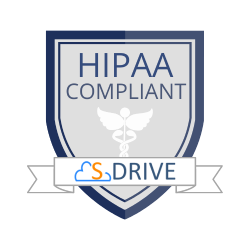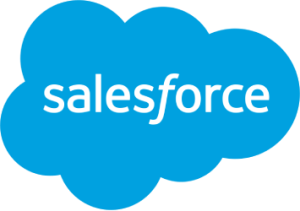Legal and compliance teams are central to any firm’s risk management strategy. These departments ensure that business activities follow legal standards and internal policies. Document generation supports this work by standardizing how critical documents are created within Salesforce, helping teams maintain consistency and reduce legal risk from the start.
However, the workload quickly becomes overwhelming. Legal and compliance teams draft contracts, issue compliance notices, and update internal policies. The pressure intensifies as they handle large volumes of documentation under tight deadlines. Manual processes in these tasks often lead to errors.
With document generation capabilities in Salesforce, legal and compliance teams can now produce consistent documents quickly and securely. Users can use pre-approved templates instead of formatting each agreement by hand. They can also insert Salesforce data automatically. This helps teams finish documents within minutes instead of hours.
Let’s explore how this transformation happens and why it’s essential for today’s fast-paced, regulated environments.
The Cost of Manual Document Generation Processes
Traditional document creation workflows rely heavily on copy-paste, email attachments, and static templates stored in shared drives. These methods may get the job done, but they come with significant drawbacks:
- Inefficiency: Manually entering new data for each contract or disclosure takes time and increases the risk of errors.
- Inconsistency: Without standardized templates and controls, team members may introduce unauthorized or outdated language into critical documents.
- Version Confusion: Managing multiple edits through email or different platforms makes it hard to track the latest version. This is especially true during audits or legal disputes.
As the volume of documents increases, these downsides can slow down business processes and introduce legal risks. For organizations working in heavily regulated sectors, such as financial services, healthcare, and education.
What Document Generation Looks Like in Salesforce
Using document generation in Salesforce allows legal and compliance teams to automate the document lifecycle directly within the CRM environment. This means they can:
- Choose a pre-approved template for a specific document type.
- Automatically populate the document with real-time Salesforce data (like names, dates, case numbers, and deal terms).
- Review and generate the final version, all from within the record page.
This simple approach greatly reduces preparation time. It also makes sure that documents meet rules and company policies.
Key benefits include:
- Accuracy: Data is pulled directly from Salesforce, reducing manual input errors.
- Speed: Teams generate polished documents in seconds rather than hours.
- Compliance: Legal teams centrally manage and update templates, reducing the risk of outdated or incorrect content.
- Flexibility: Teams can support high-volume operations without increasing headcount or stress.
Document Generation in Action
Let’s look at a few examples to better understand how useful document generation is. These examples from real-life scenarios show how document generation helps legal and compliance workflows.
Employment Agreements and HR Policies
When onboarding new employees, HR teams often coordinate closely with legal to issue offer letters, NDAs, and employee handbooks. The HR team uses document generation to choose the right contract template in Salesforce. The fields like job title, start date, and compensation fill in automatically. The result is a consistent, compliant offer letter that’s ready for digital signature and immediate delivery.
Compliance Disclosures
In fields like finance or insurance, compliance teams need to give regular updates. These updates include risk disclosures, regulatory changes, and privacy policy acknowledgments. These updates often vary by region, customer type, or service tier. Document generation lets teams tailor messages based on Salesforce data filters, reducing manual effort while ensuring accuracy across every recipient.
Vendor Contracts and Client Agreements
Sales cycles often stall when waiting for legal to draft or revise contracts. With document generation, sales reps can start draft contracts using approved templates. Legal then steps in to review only the unique terms which saves time without compromising compliance. Salesforce generates the final contract and sends it for approval or eSignature within minutes.
Strategic Benefits for Legal Teams
While time savings are the most visible benefit, the strategic advantages of document generation are just as important. Here’s why:
- Audit Readiness: Every document created has a digital trail. Legal teams can track who generated it, when, and with what data.
- Reduced Risk: Cutting manual copy-paste reduces the chance of introducing errors or omitting required clauses.
- Improved Collaboration: Teams create and store documents within Salesforce, allowing them to work from the same system. No need to juggle email attachments or different document versions.
- Better Governance: Centralized templates allow legal to enforce brand, tone, and regulatory language uniformly across all departments.
Completing the Document Lifecycle with S-Drive
Document generation solves the first half of the challenge: creating correct documents faster. The second half involves secure storage, collaboration, and compliance, which is all areas where S-Drive shines.
Built to work natively within Salesforce, S-Drive enhances the document experience for legal and compliance teams by offering:
- Organized, Scalable Storage: Every generated document is automatically saved to the correct Salesforce record, whether it’s a Contract, Opportunity, or Case.
- Granular Access Control: Users can set permissions by profile, role, or record type. This ensures sensitive information is only visible to authorized users.
- Integrated eSignature: Teams can send documents for signing through S-Drive’s eSignature partners. They can also store final copies without ever leaving Salesforce.
- DocuFetch for Secure Collection: S-Drive’s DocuFetch feature allows teams to safely request and collect documents from outside parties within Salesforce. This removes the need for email follow-ups or third-party portals. Whether it’s proof of compliance, certifications, or other supporting attachments, DocuFetch makes it easy to gather the files you need.
Conclusion
Legal and compliance teams today face increasing pressure to work faster without compromising on quality or control. Document generation in Salesforce offers a reliable, scalable way to meet that demand. By using templates and data automation, teams can produce consistent, compliant documents in seconds. When users pair S-Drive with the document lifecycle, they fully integrate it into the Salesforce ecosystem.
Ready to save time and reduce risk? Contact us or explore S-Drive on AppExchange to get started.



